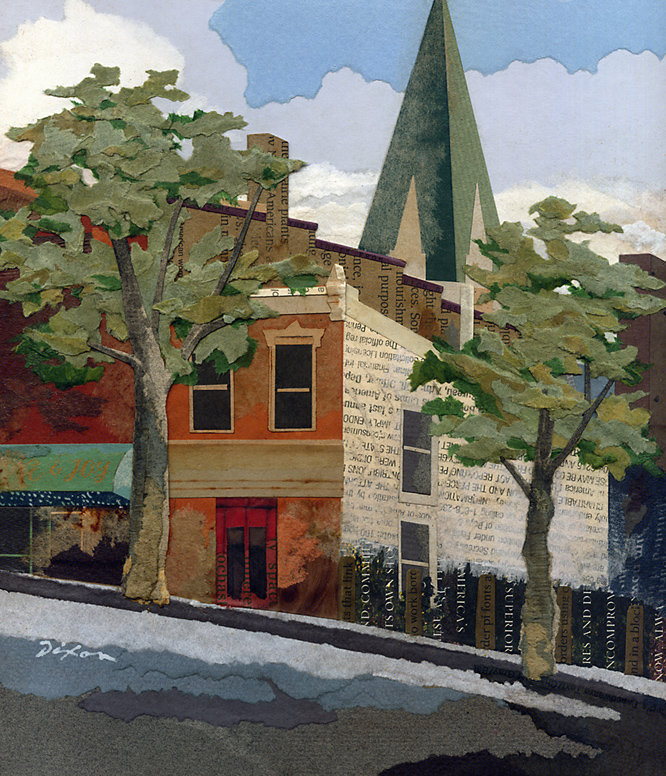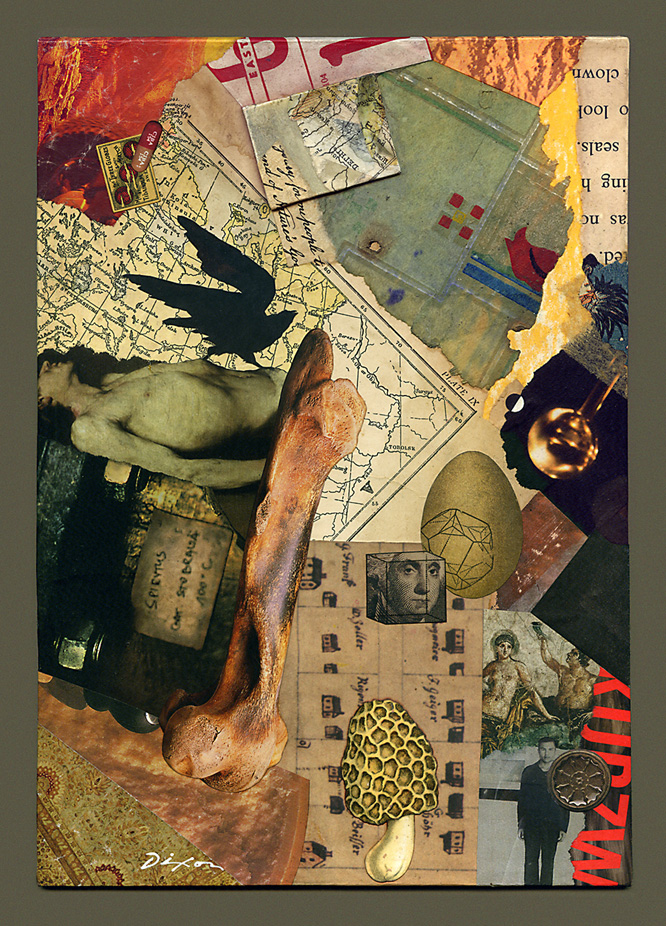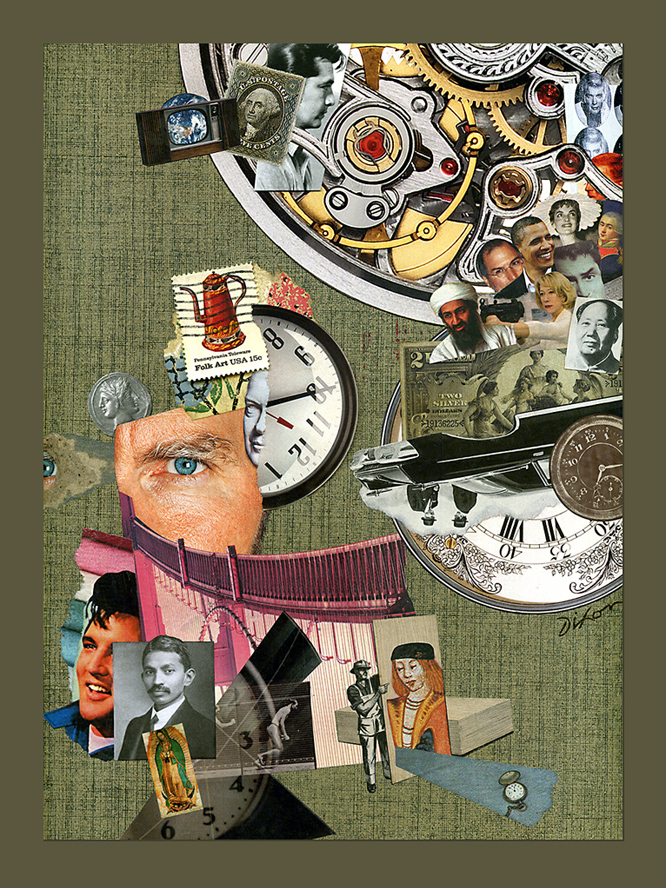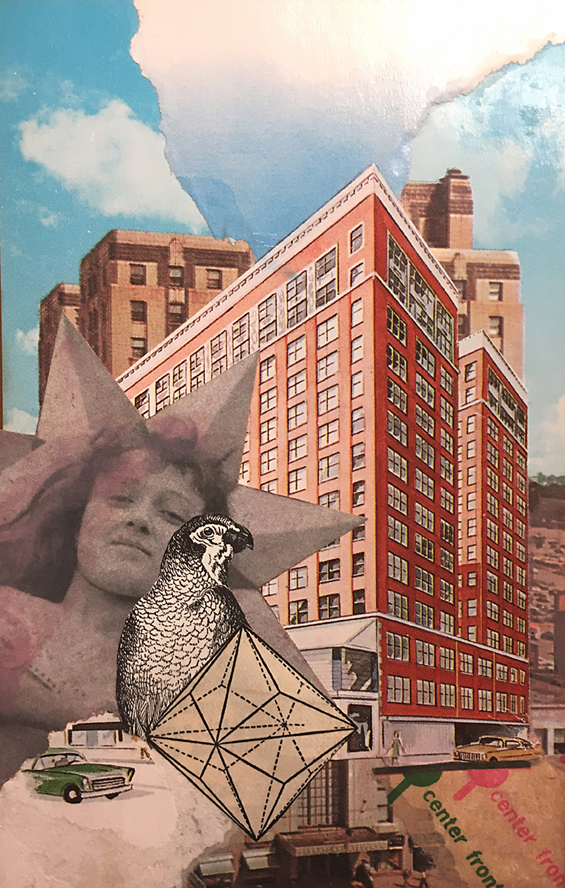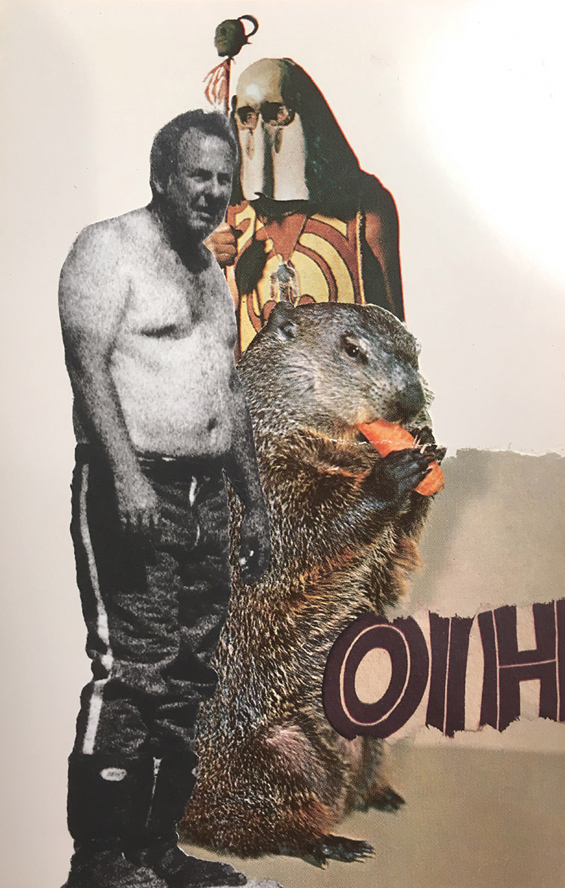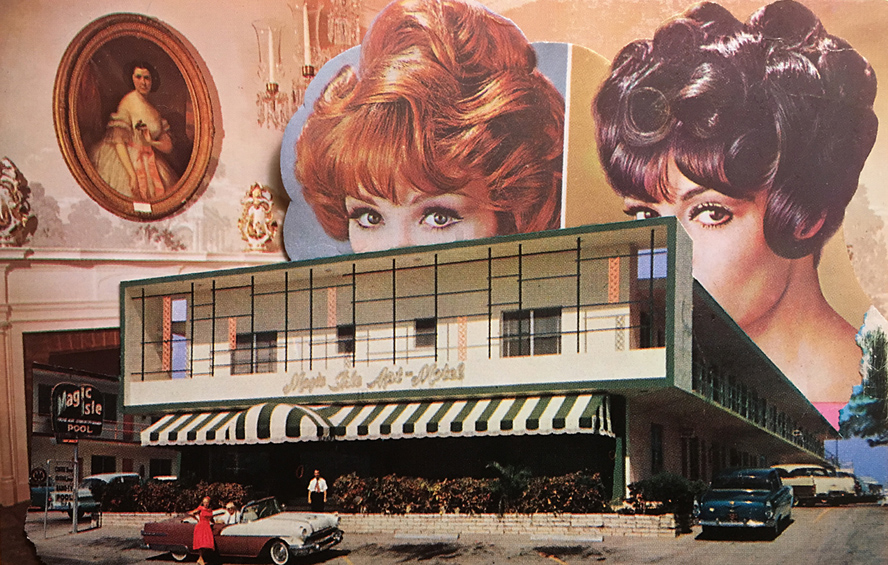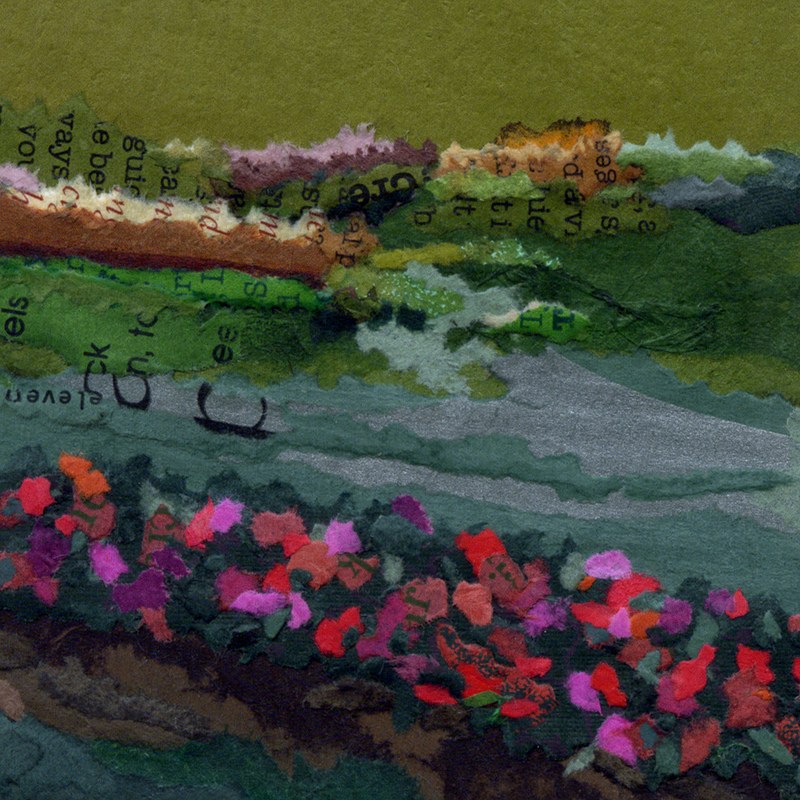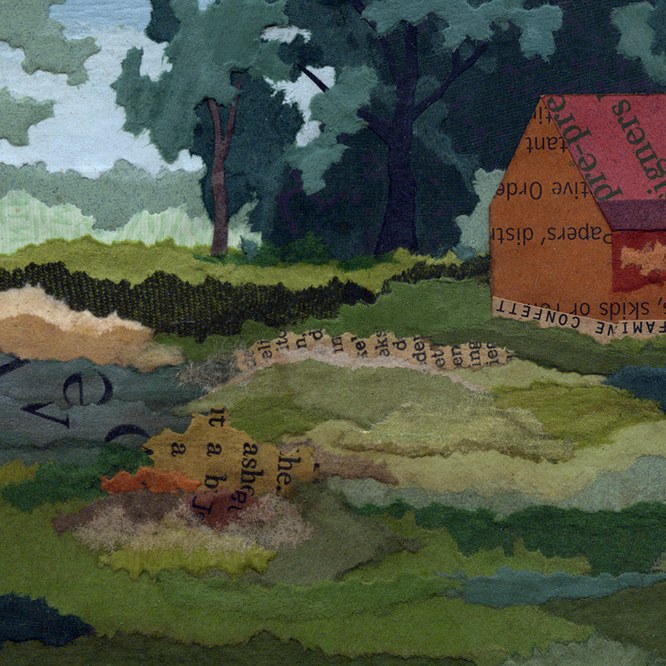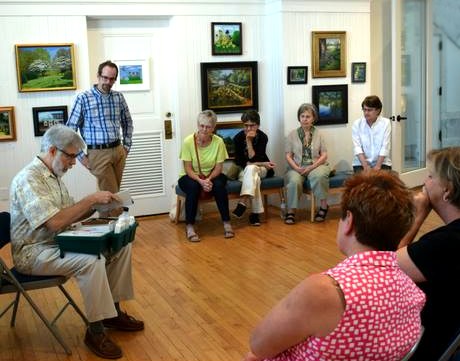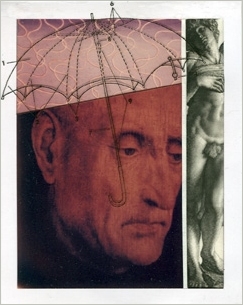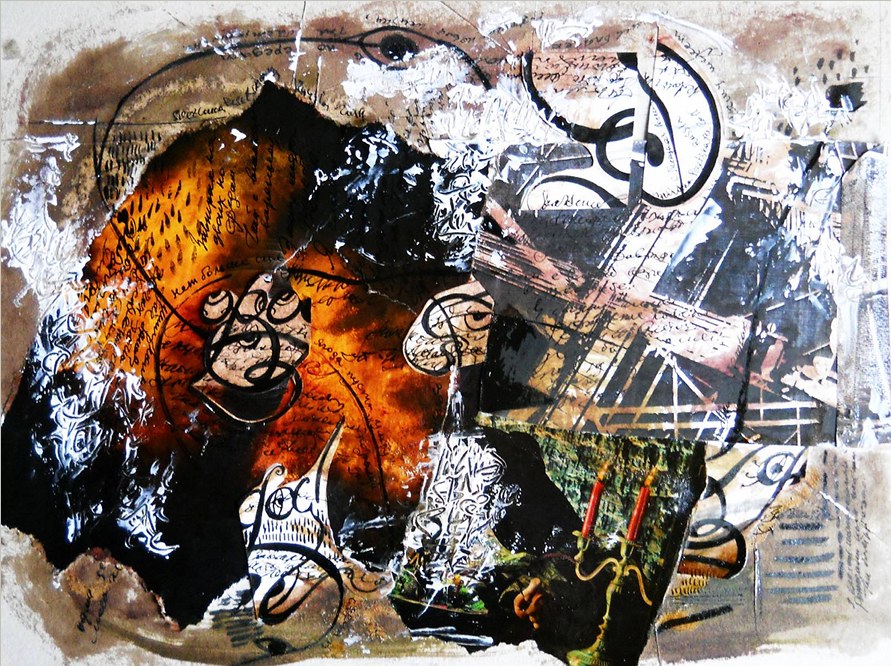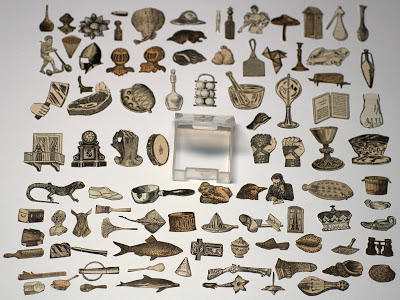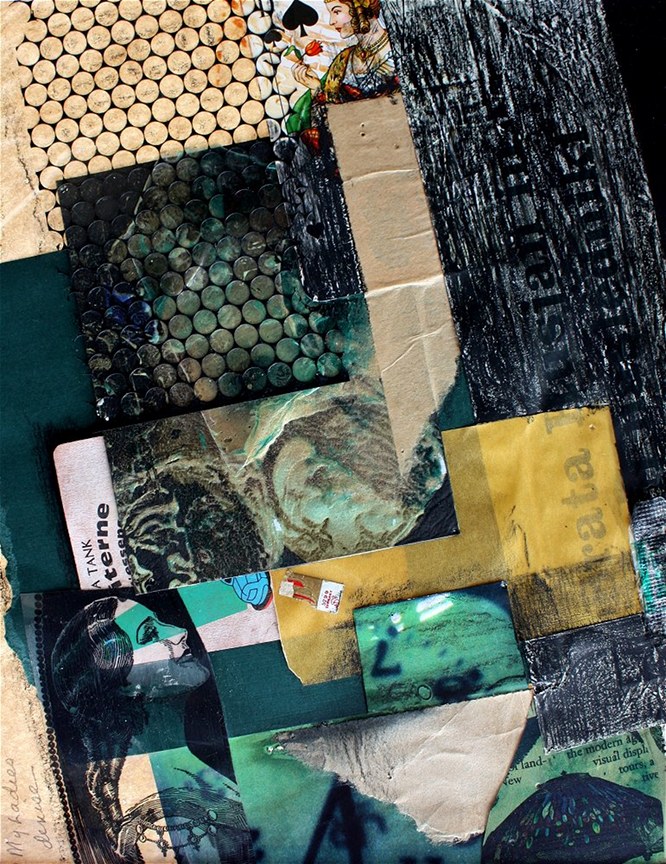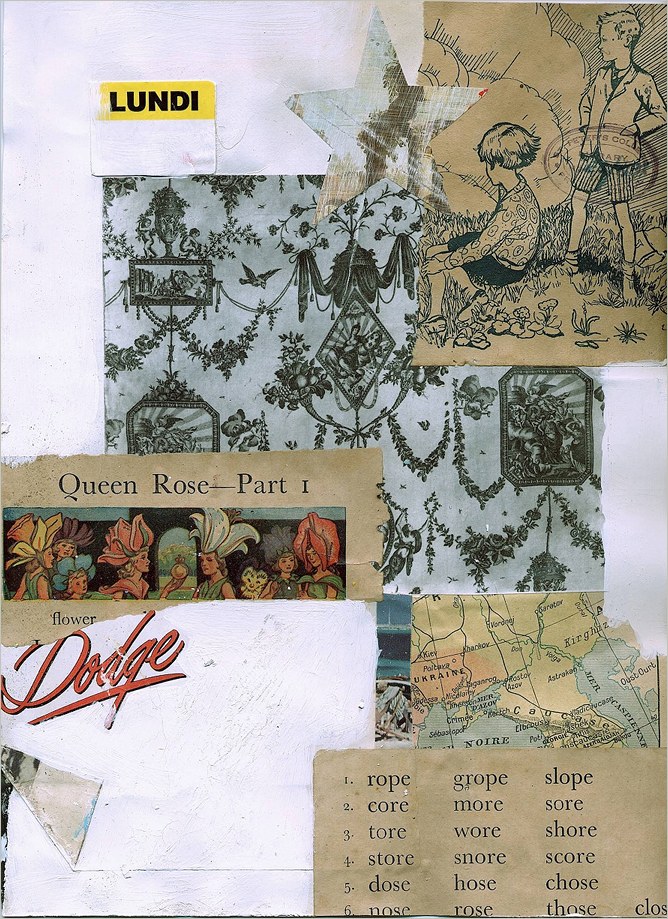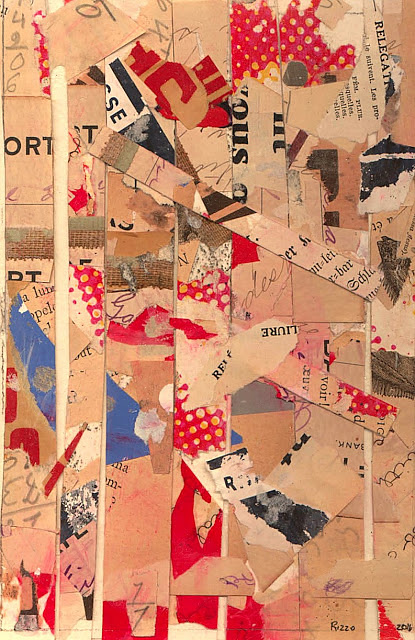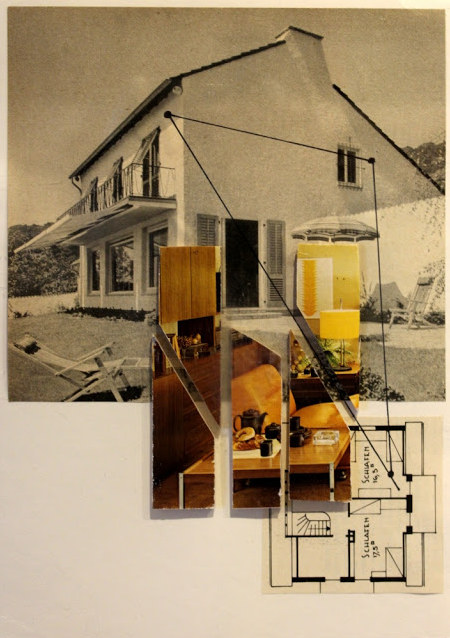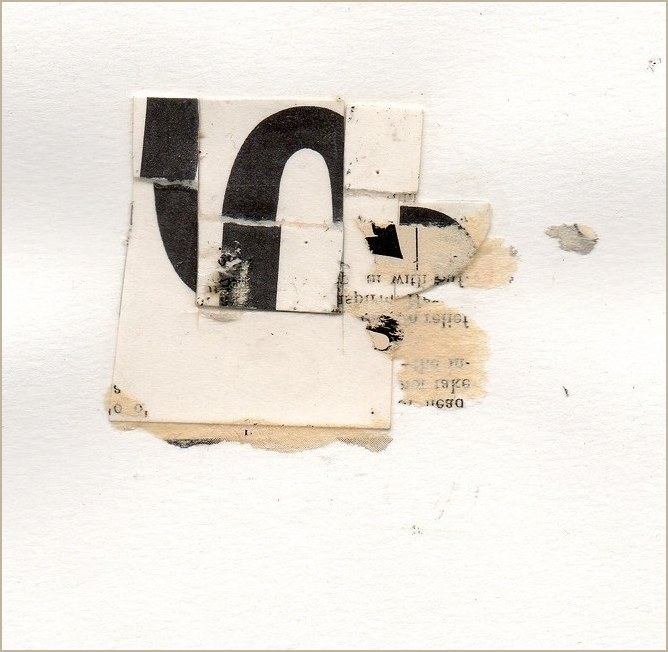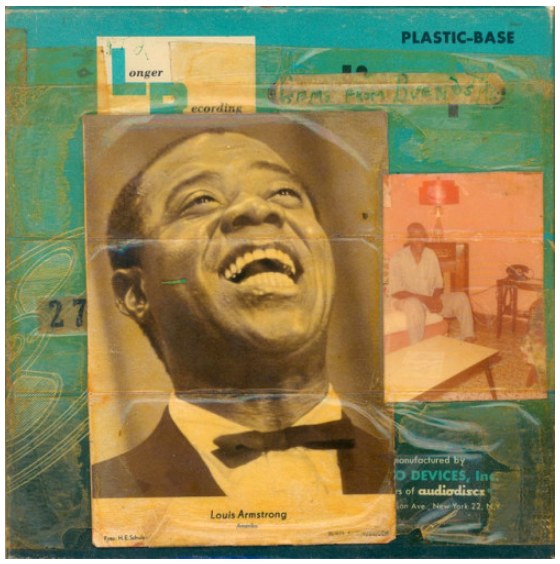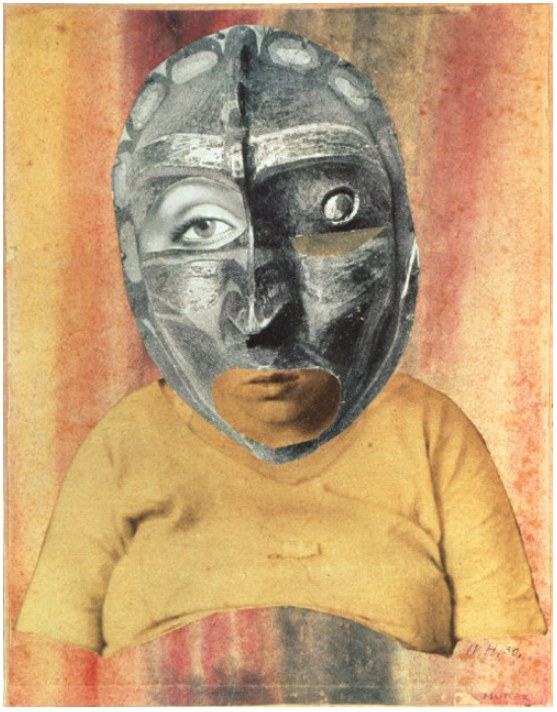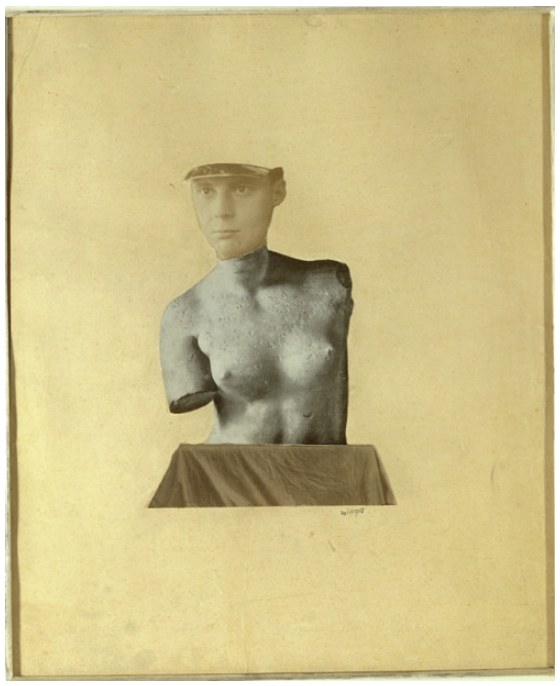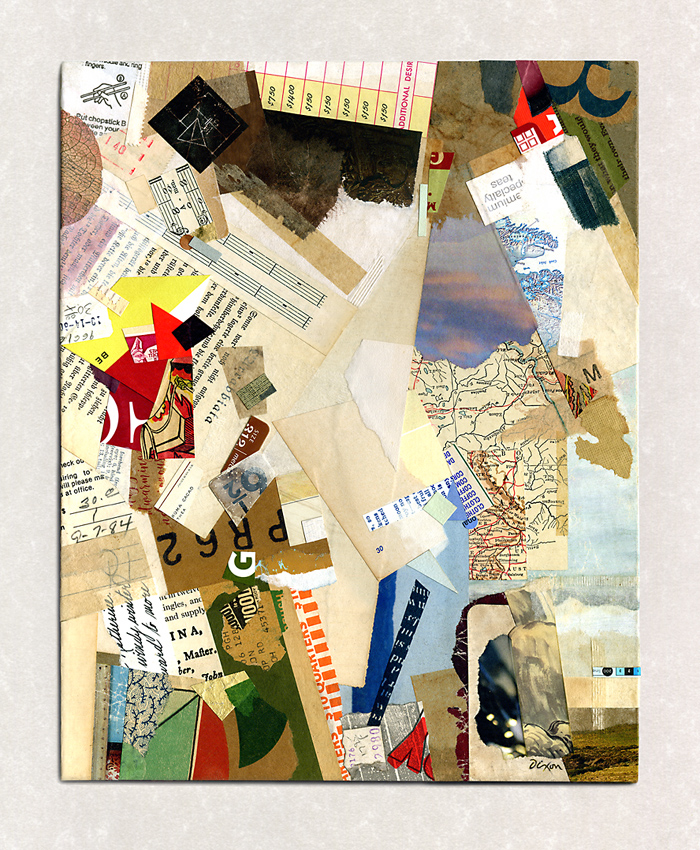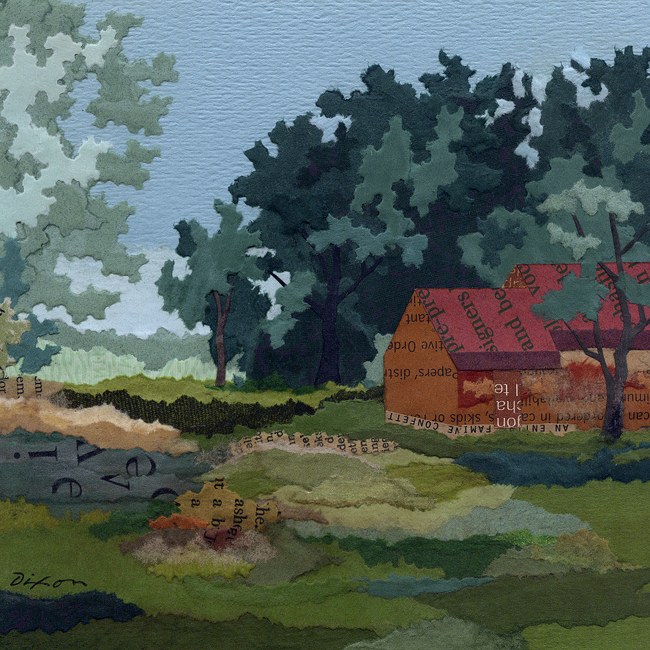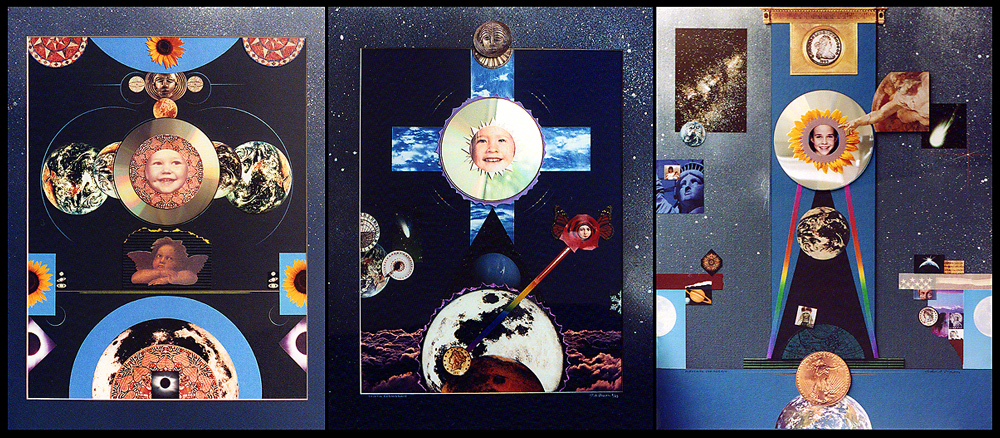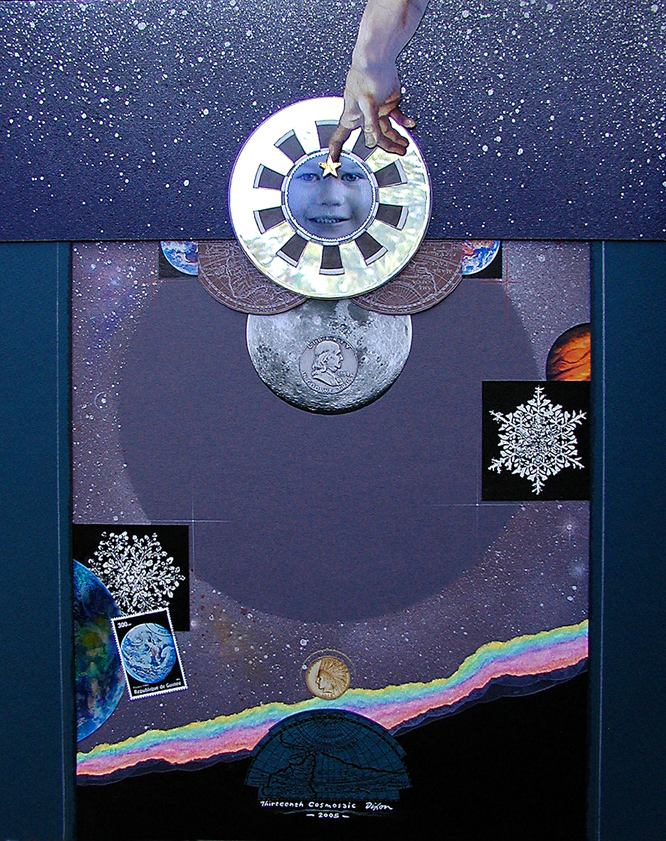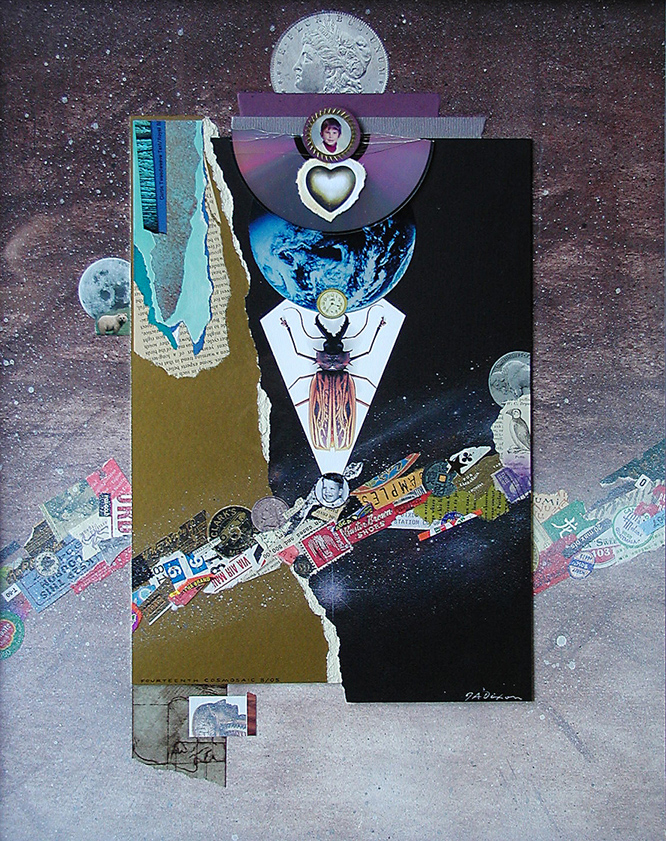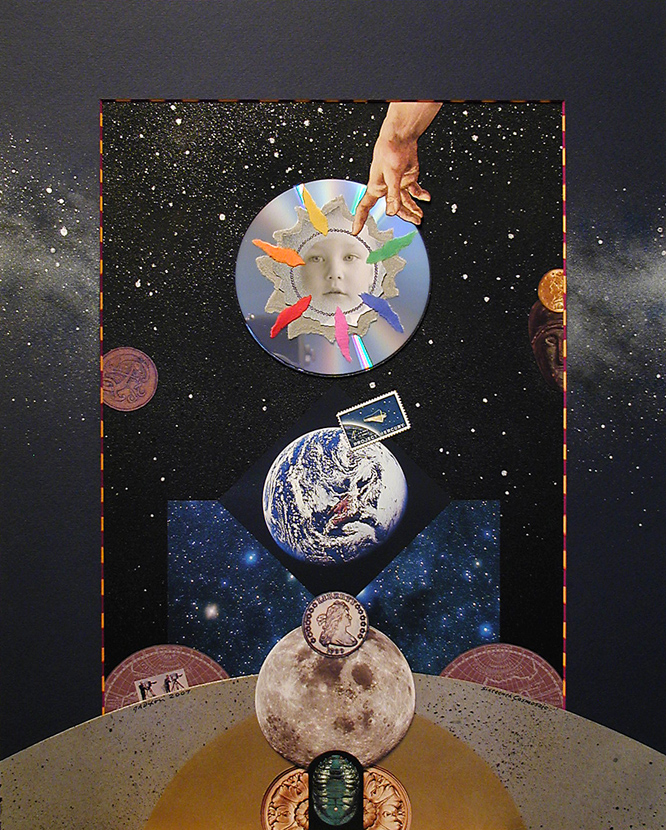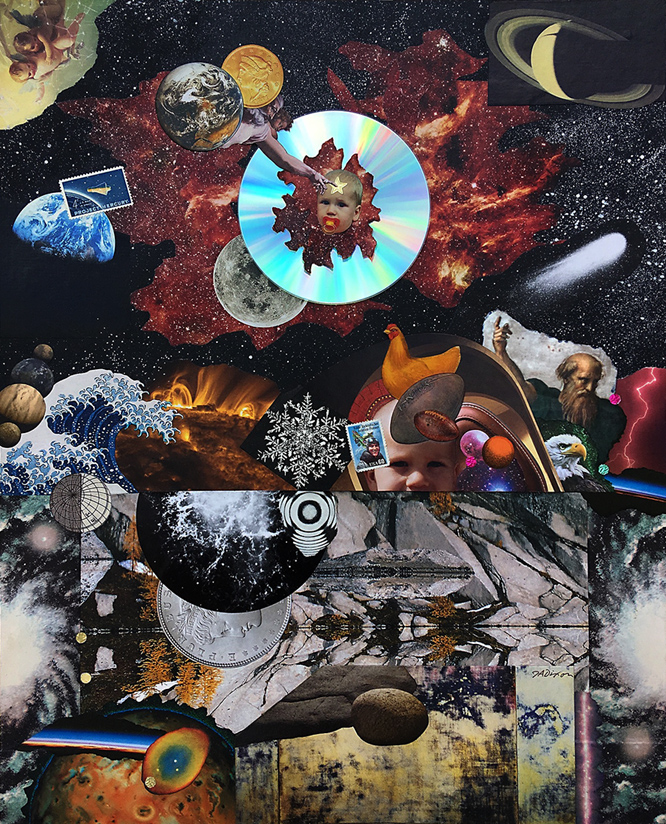“I go to nature every day for inspiration in the day’s work.”
— Frank Lloyd Wright
After much too long a hiatus, I finally got back on location with the PAACK to resume my project to create collage en plein air. Setting out in the morning seemed like a “forced march,” including unwarranted worries that I’d forgotten something essential, but as soon as I got to the nearby Scott estate, I was at home scouting for a place to sit. The environment and hospitality were both exceptional. With the grounds in ideal shape,  our hosts had offered many inviting points of view. Relying on my card with a square cutout, I fixated on a cluster of three outbuildings that would provide some desired depth (which I then proceeded to compress in space). I also was looking for a good opportunity to continue developing my technique for trees. I made a conscious effort to back off from a previous “fastidious” style and to evolve a looser method of “painting in papers.” I resisted concerns about the end result whenever I discerned a now-familiar tendency to tighten up. It was a solid, productive outing during the hottest chunk of a fine summer day.
our hosts had offered many inviting points of view. Relying on my card with a square cutout, I fixated on a cluster of three outbuildings that would provide some desired depth (which I then proceeded to compress in space). I also was looking for a good opportunity to continue developing my technique for trees. I made a conscious effort to back off from a previous “fastidious” style and to evolve a looser method of “painting in papers.” I resisted concerns about the end result whenever I discerned a now-familiar tendency to tighten up. It was a solid, productive outing during the hottest chunk of a fine summer day.
An enjoyable discussion with the owner revealed the detail I would need for a fitting title. It was quite possible that the old, white-washed brick structure central to my composition had been the storehouse for a tannery in early Danville, 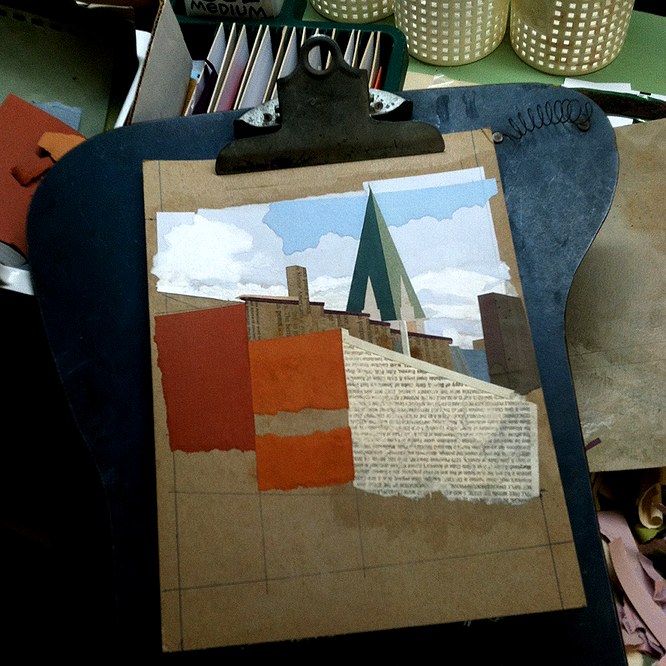 one of the original pioneer settlements in Kentucky. The small piece turned out to be a 50%-50% location-to-studio allocation. This same time formula (which still allows for a legitimate plein-air designation) was applied to another miniature that I finished next, a scene that overlooked a spot on Main Street (here in downtown Danville). The artwork was something I’d commenced before a knee injury sidelined my plein-air activity last year. After a double session in the open, I’d always intended the piece to be a hundred-percent outside solution. I surrendered that idea and decided to pull it out of storage for a studio conclusion, in order to make the deadline for our annual group exhibition. In a future entry, I’ll delve into additional aspects of what I’m discovering about this process and a few of the helpful techniques that I’ve learned.
one of the original pioneer settlements in Kentucky. The small piece turned out to be a 50%-50% location-to-studio allocation. This same time formula (which still allows for a legitimate plein-air designation) was applied to another miniature that I finished next, a scene that overlooked a spot on Main Street (here in downtown Danville). The artwork was something I’d commenced before a knee injury sidelined my plein-air activity last year. After a double session in the open, I’d always intended the piece to be a hundred-percent outside solution. I surrendered that idea and decided to pull it out of storage for a studio conclusion, in order to make the deadline for our annual group exhibition. In a future entry, I’ll delve into additional aspects of what I’m discovering about this process and a few of the helpful techniques that I’ve learned.
The 2019 En Plein Air show is currently on display until the end of August. An opening reception this Saturday evening coincides with a festive name-change event for the local arts venue — now to be identified as Art Center of the Bluegrass. The prominent facility in a former federal post office has always felt like a “home stadium” to me, ever since my first solo collage exhibition was held there, not long after the building was acquired and restored as a focal point for the arts. Long-time followers of this humble blogsite will know that it has surfaced regularly in the yearly roster. My best to everyone on deck at this institution, as you chart new waters for a valuable community resource.
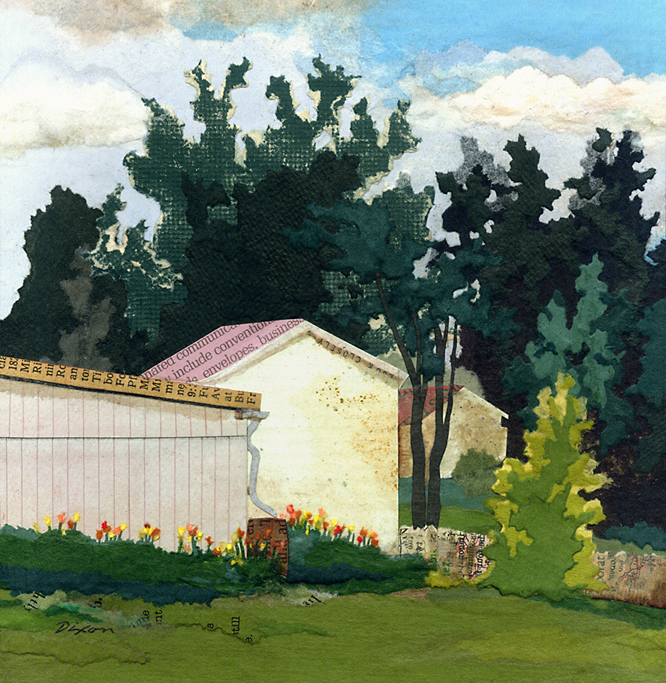
Perhaps a Tannery
plein air collage miniature by J A Dixon
7 x 7.25 inches
• S O L D
Across Main
plein air collage miniature by J A Dixon
7.875 x 9.125 inches
• S O L D
